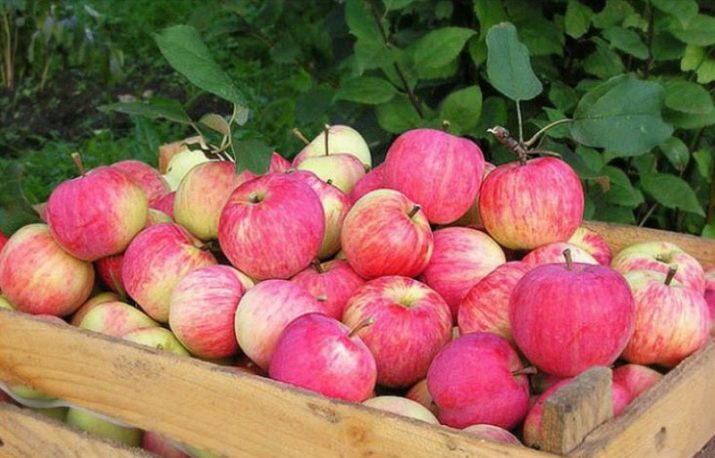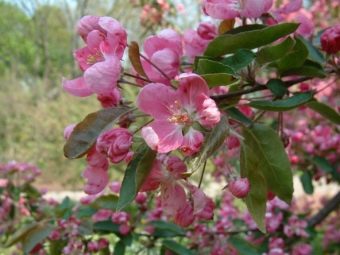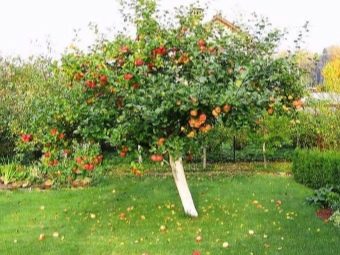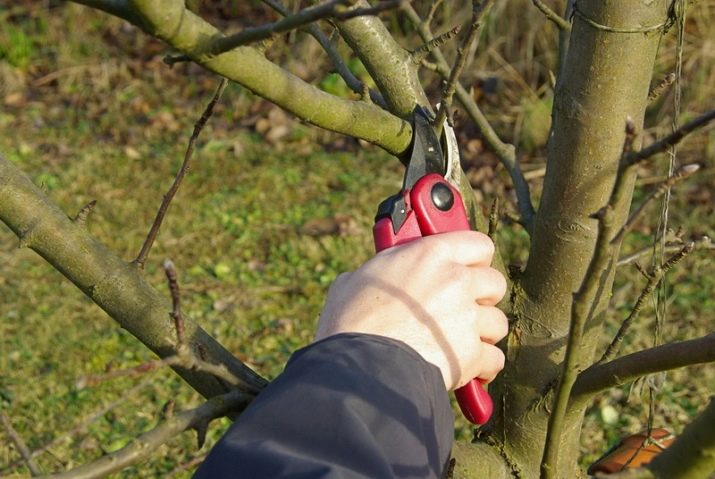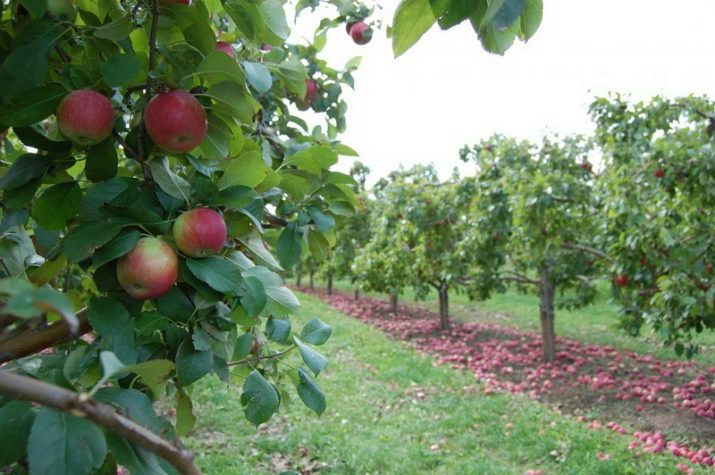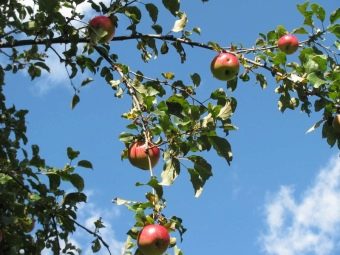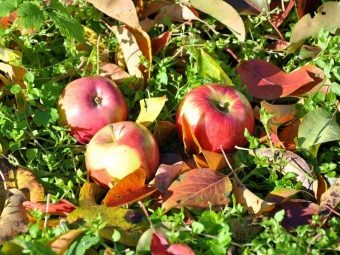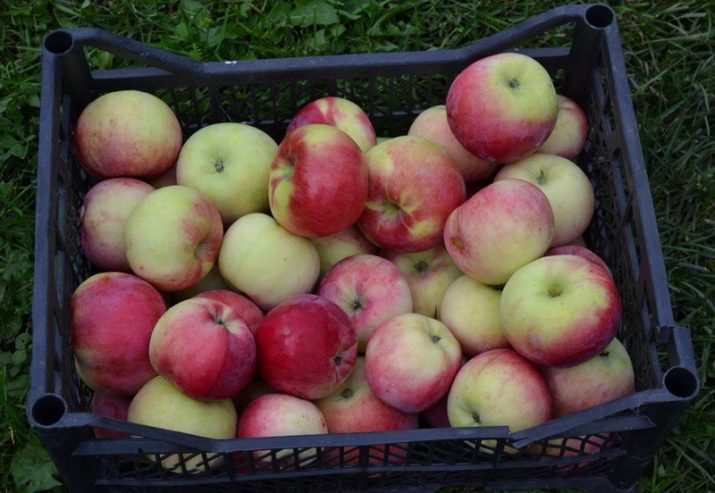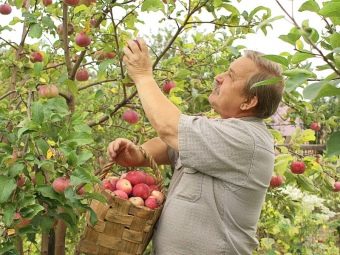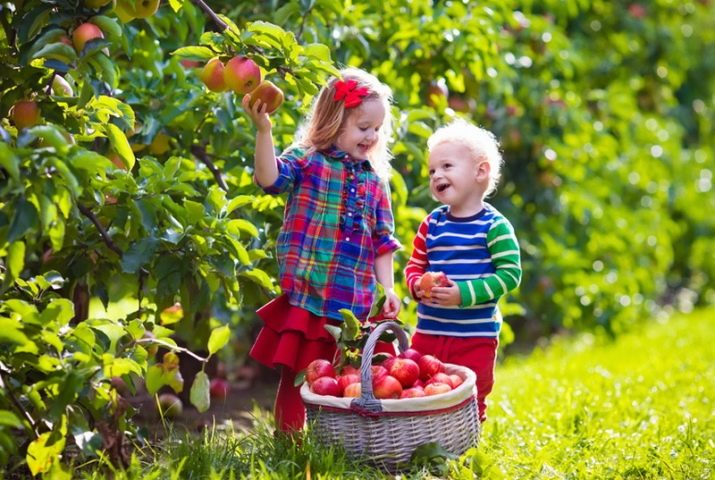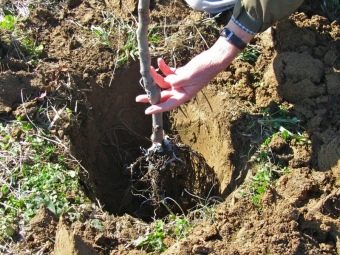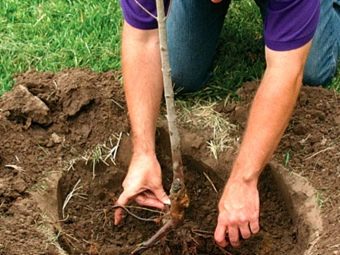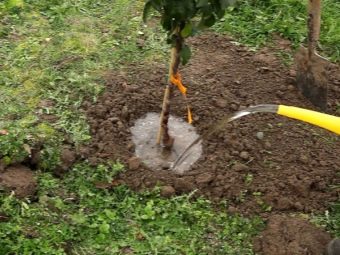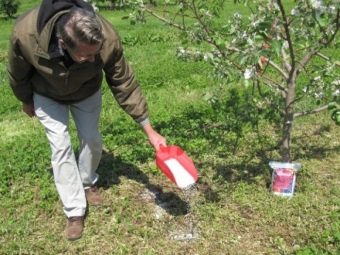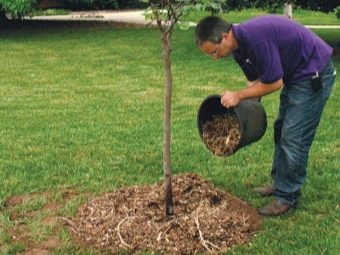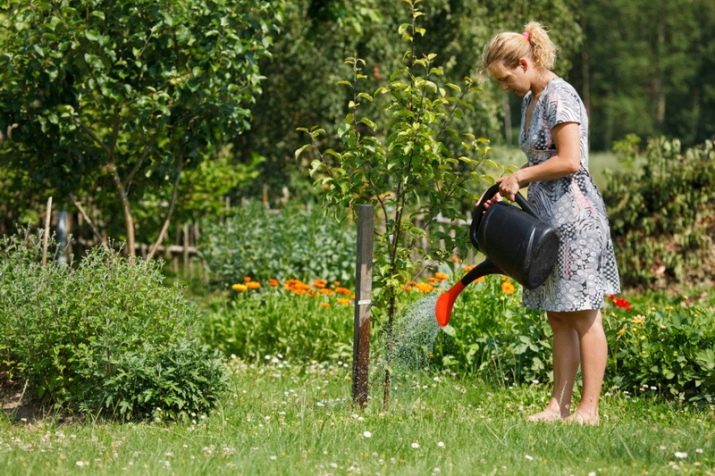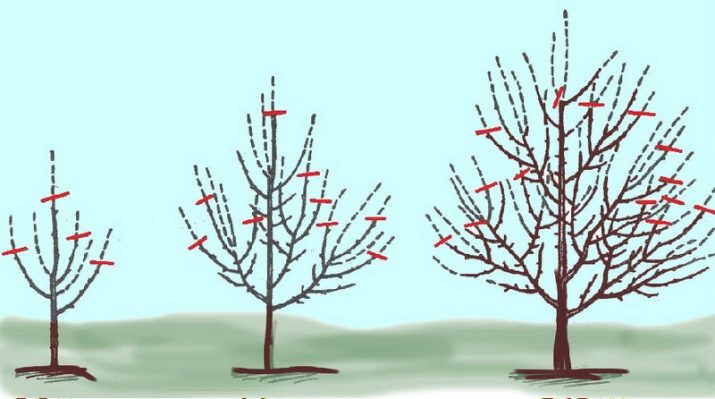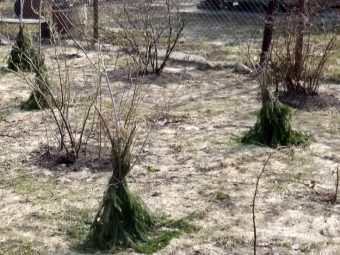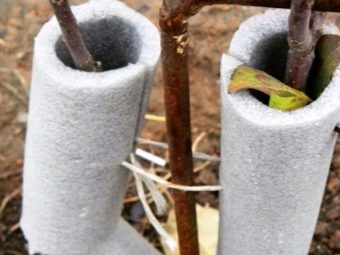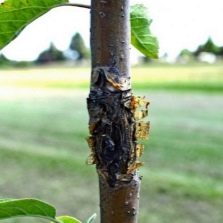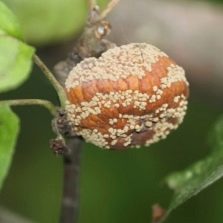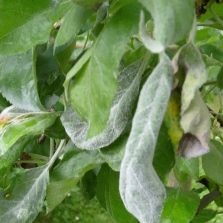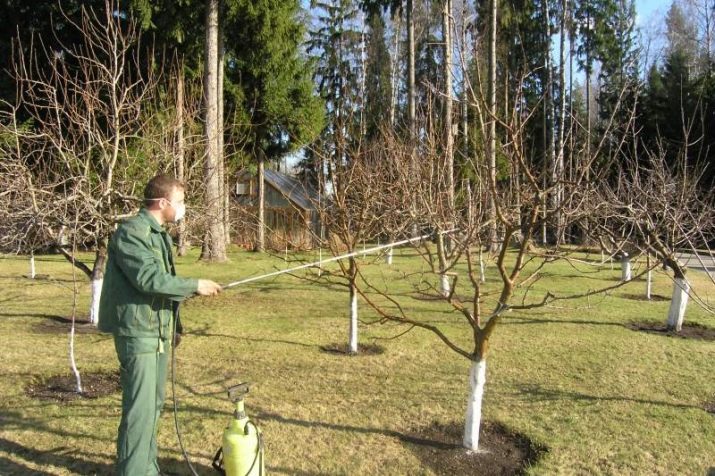Apple tree "Welsey": characteristics of the variety and tips on farming
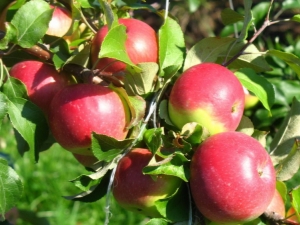
Fruit crops such as apple trees are gardeners.This trend is associated with the possibility of obtaining good yields of apples, as well as the attractiveness of the tree during the flowering period and not only. Among the most popular varieties worth noting "Welsey", which is a special account of the Russian gardeners for more than a dozen years.
Variety description
Apple tree "Welsey" has American roots, in our country has been grown since the XIX century, and to this day has been successfully cultivated in private gardens and for industrial purposes. Culture gives a good harvest in most regions of Russia - in the Moscow region and the Leningrad region, in Siberia and in the Altai, in addition, the apple tree grows well in southern latitudes. Particularly popular grade acquired for resistance to negative temperatures and some diseases that most often affect fruit crops.
The distinctive characteristics of "Welsey" were appreciated, which is why the apple tree was used as a mother plant for the breeding of new hybrids, of which there are about 30 copies. Apples are a winter variety, grow large in size. The tree early enters the phase of fruiting, usually the first harvest from the tree can be obtained already in the fourth year after planting the seedling in the ground. The quality of the bed is high, according to some reviews, the Welsey apples surpass the popular Antonovka in taste characteristics.
An adult plant reaches a height of medium size, most often this figure is within 4-5 meters. The crown of the plant has a spreading pyramidal shape, with the passage of time acquires a more rounded shape. The branches develop at an acute angle, which increases the risk of damage to the crop during the abundant formation of fruits.
The main task of the gardener, who plans to grow the Welsey apple tree, is to form the crown, since the correct pruning will allow it to form in the right direction, for the uniform development of the fruit branches.
Foliage does not stand out for its size and does not thicken the culture, has a rich dark green color and a shiny surface. Apple tree blooms with white flowers, with a pink tinge. Under favorable conditions, fruit sticking is characterized by high rates. The apple tree is not columnar, therefore it needs rationing of the formed ovaries, otherwise overloading with fruits may weaken the culture. In case of loss of strength, the resistance of the plant to frost can decrease, besides, the harvest in the next season will be inferior in taste.
The "Welsey" variety is considered to be partly a samoplodnom tree, as indicated by the viability of culture pollen and the formation of ovaries from it. Based on this quality, to increase crop yields in the garden, it is best to plant pollinating crops. The neighborhood of the tree with the apple tree of the variety “Antonovka” or “Zvezdochka”, which act as excellent pollinators, has a positive effect.
The “Welsey” apples are notable for their high consumer properties, the weight of one apple can reach 150 grams, the fruits grow roundish, slightly pinned down from above and below. The peel is loose, painted in light shades of yellow with blurred pink stripes. In the technical ripeness phase, the color of the apples becomes brighter. The flesh of the fruit is sweet and sour and juicy. It is noteworthy that the sweetest apples grow around the perimeter of the crown.
Culture is popular due to its frost resistance, the apple tree retains its viability at thermometer marks down to -25 ° C, a further decrease in values may adversely affect the plant. As noted above, the variety is resistant to fungal diseases - this applies to scab, but some diseases can still affect the culture. For example, powdery mildew or cytosporosis. The danger for the apple tree is the moth and the hawthorn.
Fruit harvesting falls in September, and delays in apple harvesting may damage some of the crop.Charges are directly dependent on the age of the culture. As a rule, apple trees, whose age does not exceed 10 years, yield from 25 to 40 kilograms of apples, trees from ten years old can please gardeners with crops that make up about 200 kilograms.
To store apples "Welsey" is best to use baskets or boxes made of cardboard, stacking fruits in tiers, they are additionally shifted with paper. The optimal room for the harvest will be the basement or cellar, where the thermometer mark will be at 0 ° C. Crop harvested in large volumes, it is customary to store in special refrigerators, where apples retain their commodity properties until spring.
As for the composition, the fruits are equally useful both fresh and after heat treatment. The following beneficial substances are present in 100 grams of apples: ascorbic acid - 0.6%, vitamin P - 190 mg, pectin - 11%, acids correspond to the level of 0.6%, sugar - 11%.
Advantages and disadvantages
To have the most complete picture of the fruit crop, It is worth noting the positive features of the variety "Welsey":
- The apple tree belongs to skoroplodny plants, therefore gardeners can count on a crop on achievement by culture of four-year age;
- in the southern climate, apples reach their technical ripeness by September, which has a positive effect on their composition;
- fruits have a very remarkable appearance, due to which their commodity attractiveness increases;
- after harvesting, it does not need additional drying, so the fruits are ready for use immediately;
- in comparison with other varieties of apple trees, "Welsey" shows great yields;
- due to good keeping quality, the fruits are subject to long-term storage and transportation, subject to the creation of optimal conditions;
- the tree is immune to the most common diseases that affect fruit crops;
- The variety is distinguished by its resistance to negative temperatures, which allows it to be cultivated in regions with a harsh climate.
Planning to grow this variety on your garden plot, except for positive qualities. it is necessary to explore the weaknesses of the culture:
- an apple tree of this variety needs to be harvested in time, otherwise the fruits fall off;
- due to errors associated with agricultural technology, too many fruits may form on the crop, which negatively affects their size, appearance and taste;
- in order to obtain high yields, the crop requires pollinating plants growing alongside;
- the taste characteristics of fruits depend on the weather conditions that have developed during their ripening - rainy weather will make the apples too sour;
- solar activity affects the appearance and color, as a result of which the fruit shade may be different;
- the tree is able to bear fruit for about 20 years.
Landing
In order for the cultivation process to be successful, some important nuances need to be taken into account. In particular, it concerns the period of rooting seedlings in the ground. It is preferable to carry out work in early spring or in the late fall. The latter option is more popular. The cultivation area of the apple tree must be sunny, however, without direct contact of sunlight, because the foliage of the apple tree can get burned.
Welsey is well developed in sandy and loamy soils; soil aeration is also important for culture. Too heavy soil is usually mixed with peat or sand, which provides a more productive air exchange. For the landing pit under the apple tree it is necessary to prepare soil mixture.
It is best to have in its composition the following components - humus, ash, peat and nitroammophoska.
The hole for planting should measure 80x80 centimeters. It would be better to prepare it in advance. If there is an excess of clay on the site, it is necessary to arrange drainage at the bottom of the hole with claydite or brick. Rooting of a young tree occurs according to the standard scheme:
- in the hole is formed a mound in which the seedling is placed;
- the root system is straightened over the surface, after which it is powdered with soil;
- the soil must be compacted, the root neck of the plant must be located above ground level;
- after the formation of the circle of a pristvolny circle it is necessary to water the apple
- in some cases, a peg is driven in alongside for support and garters;
- the circle must be mulched to conserve moisture and get rid of weeds.
Agrotechnology
Care for this variety of apple includes the following mandatory work:
- watering;
- weed removal;
- preventive measures concerning the prevention of diseases and pest invasions;
- pruning culture, which consists of sanitary, forming and rejuvenating works;
- soil fertilizer;
- mulching and soil loosening.
Regular irrigation depends on the weather, in the dry season, abundant moisture is required, usually the culture is watered once a week and a half. On average, one apple will need about 2-3 buckets of water. It is better to postpone work in the evening, in order to avoid burns of foliage, after the introduction of fluid, it is necessary to loosen the soil in order not to disturb the air exchange. Pruning is a must for fruit trees.
Since a feature of the Welsey structure is branches that grow strictly upwards, there is a risk of their damage under the weight of ripe apples. Proper pruning will avoid such situations.
Formation of culture is performed every season, it is best to bring the crown in order before the phase of maturation of the kidneys. Sanitary pruning is carried out as needed, depending on the state of the tree. The introduction of fertilizers for apple trees involves several stages. The first feed culture will need at the beginning of the growing season, the second introduction should be carried out in the flowering phase and after it. "Welsey" responds well to organic and mineral compounds, fertilizer can be carried out as a root method, and foliar.
As for the shelter for the winter, then it is necessary to make a decision about the need for these activities depending on the characteristics of winter in a given region. In areas with harsh winters, the apple tree must be warmed. For these purposes, you can use a mulle from a dry mullein for warming the trunk circle, the culture itself is tied with lapnik, you can also use sackcloth.
The specificity of the variety somewhat facilitates the care of the crop, since the probability of hitting a scab is very low. This quality of apple is valued most by breeders, therefore culture often acts as a mother plant for apple hybrids.
But, despite a decent advantage, "Welsey" can still affect the following diseases:
- cytosporosis;
- fruit rot;
- powdery mildew.
Treatment and prevention are carried out according to the standard scheme, with the help of specialized store products and complexes. As for insects that are dangerous to the tree, it should be noted moth and common hawthorn. Pest control is carried out by insecticides and fungicides. An important point that will avoid the occurrence of diseases or the emergence of pests on the culture, is the cleaning of fallen leaves on the site.
For struggle with caterpillars, gardeners often use trapping belts, which are established in early spring.
Gardeners reviews
The grade that experienced cultivators who grow apples in industrial quantities give the variety is high. This is due to such positive characteristics of the crop as the ability to produce high yields and winter-hardiness, which is important for the northern and central regions where the Welsie variety is cultivated.Some novice gardeners, depending on the recommendations of professionals, prefer to begin planting apple trees in their garden plot with the American variety of fruit crops.
Another tacit confirmation of good reviews about the plant will be the presence of a large number of hybrid crops, where this particular variety was used as a mother plant. Most of the entrepreneurs who sell apples prefer Welsey for the high consumer and taste qualities of the fruit, their good keeping quality and transportability.
Description characteristics of apple varieties "Welsey", see the following video.

